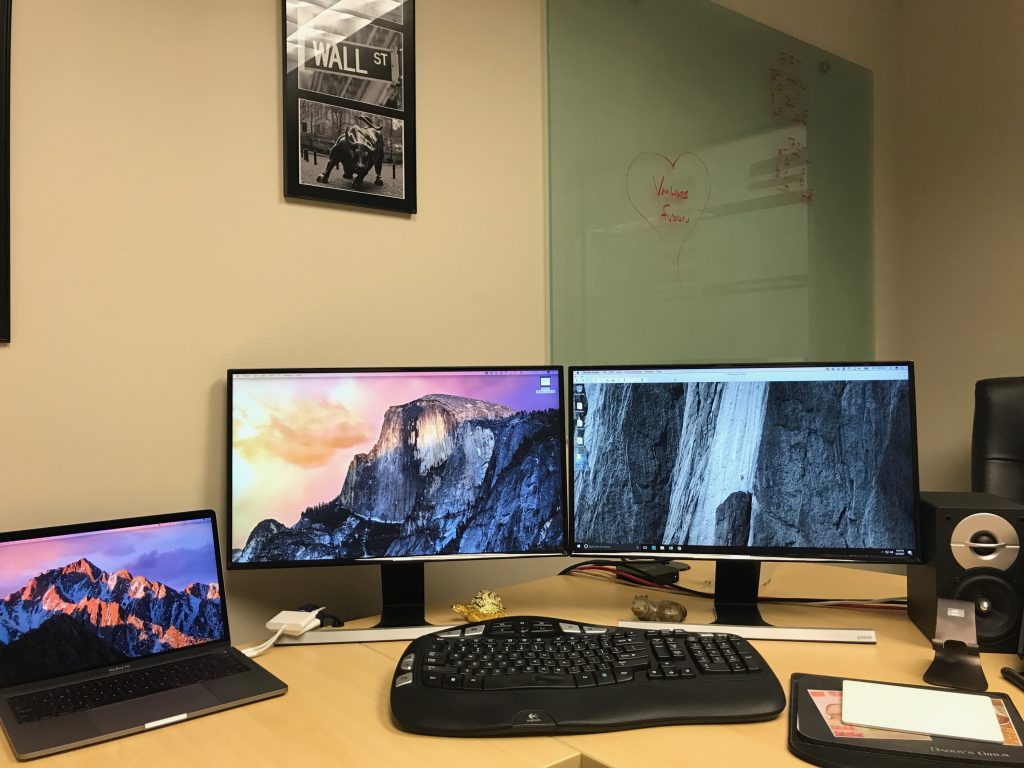
by Donn Bullock, Director of End-User Computing Channel Sales for the Americas.
With over 20 years of high-tech sales & marketing experience, Donn has worked at every level of the IT channel including 3 resellers, 2 manufacturers (Compaq & IBM) and a distributor. He started one of the first (he was told by VMware the actual first) business partner VDI practices focused on VMware in 2006. He joined VMware in July 2012 as the first external hire for the new Commercial Field Sales team and today serves as a channel sales executive for VMware’s $500M EUC business in the Americas.
Donn has a BA from Wake Forest University and an MBA in Finance and Marketing from Vanderbilt University and lives in Raleigh, North Carolina.

No matter how millennial you might be (or think you are), sometimes you just can’t escape Windows. That’s what Bryan Garner, CEO of home audio company TruAudio, and his executive team discovered, much to their collective chagrin. Following the setup of their all-new Apple MacBook Pros, the excitement of having joined the Apple ecosystem was abruptly replaced with the reality of a recently installed, Windows-based financial system. As new Mac converts, Bryan and team immediately set out to rescue their newly acquired IT tools from the setback of Windows non-compatibility.
As a fast-growing, small business, TruAudio had been running their financials from Quickbooks Enterprise for many years. In an office exclusively comprised of Windows PCs and Servers, upgrading to Microsoft Dynamics seemed like a natural fit given the IT history of the firm, the application’s ability to scale with the fast pace of their company’s growth, and the recommendation of their trusted IT consultant. That is until the trending younger executive team decided that Macs were their platform of choice for personal productivity. It was only after setting up their crisp new hardware that the discovery of no MacOS interface within Dynamics was discovered.
After an unfulfilling foray into Oracle’s VirtualBox, Bryan and team took the advice of yours truly and had a go with Fusion Pro. The firm has not looked back since. First, VMware’s Fusion Pro satisfied their Dynamics needs, allowing each of the users to create a dual-screen desktop environment of both MacOS and Windows, running applications simultaneously on either desktop OS (and indeed running Microsoft Office on both).

Along the way, the team also discovered that Fusion resolved the unsuspecting issue of printing to their respective locally attached Konica Minolta bizhub printers, which also lacked a native MacOS driver. Printing through Windows on Fusion was now all they needed. As the firm has continued to grow rapidly, Fusion has resolved other unforeseen issues and found its way into other critical parts of the business. For example, the team also discovered that Crestron, the leader in commercial and home automation, lacks a MacOS driver for its products, an easy resolution found once again with Fusion-empowered MacBooks. By connecting the Crestron automation tools into Windows within Fusion, TruAudio has been able to provide the sound testing studio with flexibility for anyone wanting to test out new solutions on TruAudio gear.
In today’s IT environment, not every user wants to be locked into a single OS. For many users, application choice dictates platform, not the other way around. And while users seek choice in their BYOD demands, corporate IT departments insist upon control and standardization. VMware Fusion reconciles this potential conflict of end-user choice with control, creating an environment in which both Windows and Mac can not only work together, but empower new options and use cases not available to users before.
Don’t believe that Fusion can’t make a difference in your company? Just ask Bryan as he runs to his next meeting with MacBook Pro in hand. Try it yourself today, for free.





